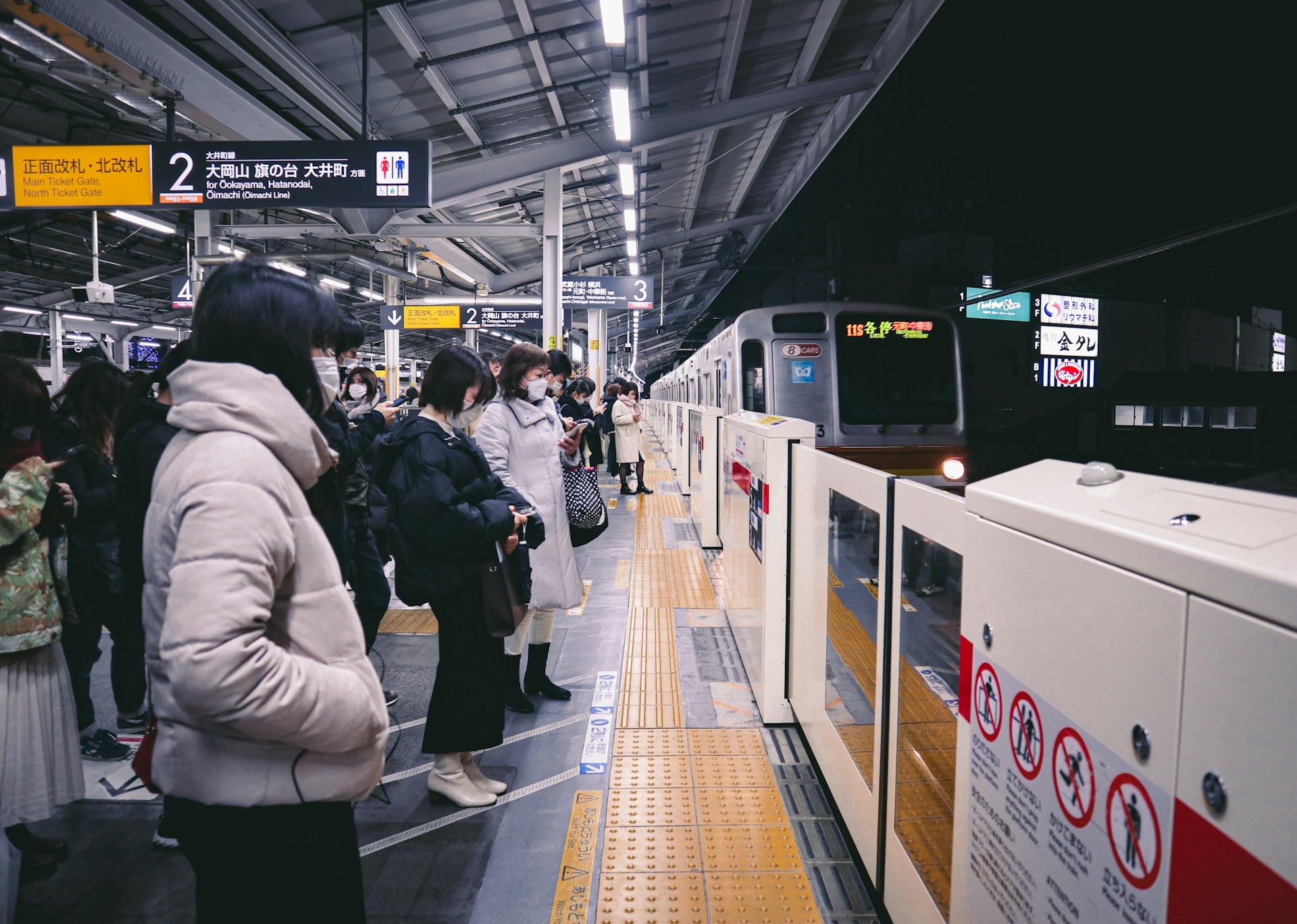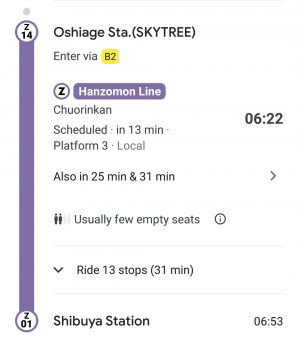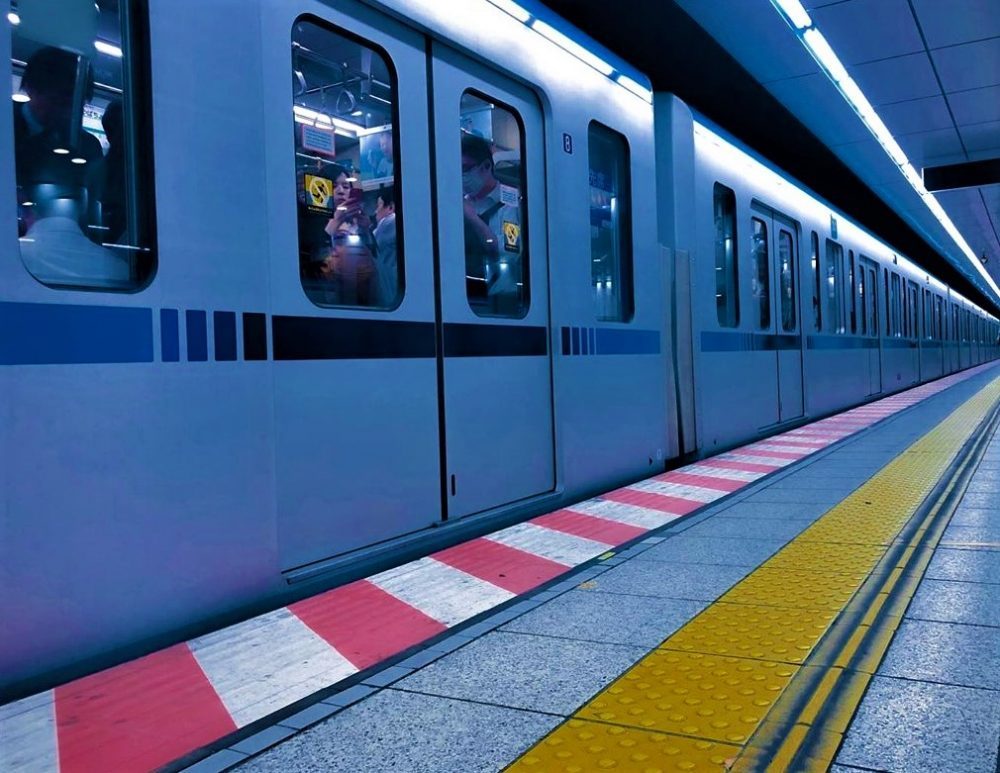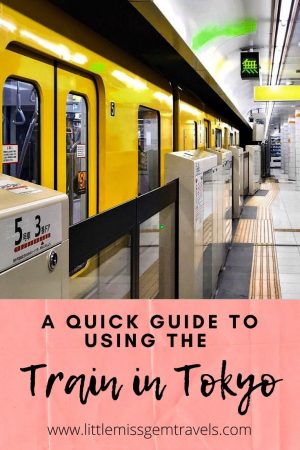The posts in this blog may include affiliate links. This means that when you decide to purchase anything through these links I get a small commission at NO extra cost to you.
The Suica Card we used in Tokyo was included in the trip with Creative Escapes which was discounted in exchange for an honest review, the photos in the post were taken by me and the opinions expressed in this post are all my own.
The map of Tokyo’s train and subway system looks like the most confusing puzzle to try and understand and navigate. With 13 different coloured lines, intertwining their way across this large metropolis, snaking through 285 stations. To try and make it a little easy for you, I’ve put together a quick guide to help you understand using the train in Tokyo.
Japan’s railway system is divided into three: JR (stands for “Japan Railway) – this was once the national railway but is now a private company, two subways (Tokyo Metro and Toei Subway) and then seven other private companies.
Tokyo is famous for having one of the world’s most efficient and reliable public transportation systems. The city’s trains are some of the cleanest and quietest I have ever come across and even though Tokyo also has a network of buses and taxis, most travellers find that the trains cover all their transportation requirement.
A Quick Guide to Using the Train in Tokyo
Buying Individual Tickets
All stations have machines from where you can buy individual tickets, purchase them with coins and notes (but not credit cards). Fares are determined by the distance travelled, so you’ll need to select the appropriate fare for your destination when buying a ticket – there is usually a fare chart or map above the ticket machines but if you can’t work it out, the easiest method is to buy a ticket at the cheapest fare (¥130 for JR, ¥160 for Tokyo Metro, or ¥170 for Toei) and then use one of the “fare adjustment” machines at you destination to pay the difference.
Buying Travel Passes
It’s actually quite rare for the people of Tokyo to purchase paper tickets, most of them buy passes that contain electromagnetic chips that just get swiped over the scanners at ticket gates (very similar to London’s Oyster Cards) so if you’re planning to be in Tokyo for more than a few days purchasing one on your arrival makes sense in order to avoid the confusion and expense of working out the cost of individual fares.
The Suica card is not restricted for use on the train in Tokyo but can also be used on the city buses so getting around the city is actually a lot easier than you might think.
At the end of your trip just head to the ticket counter at the Airport and have the remaining balance refunded (minus a ¥500 charge).
Navigating Stations
I was actually surprised by how many signs were in English whilst walking around the stations in Tokyo, this may have been because it was around the time of the Rugby World Cup but it meant that exits and transfer routes all well marked. Signs for individual trains are clearly marked in both English and Japanese as are the announcement on the actual trains, so it is actually quite difficult to miss your stop (unless you fall asleep).
My number one tip for navigating stations and catching a train in Tokyo would be to simply use Google Maps, not only does it tell you what line (and the colour) and how many stops to travel but it also estimates how busy the train will be, and which carriage is most convenient for the station exits.
Tokyo’s train system shuts down between roughly Midnight and 5am, this can make the rush for the last train of the evening a bit manic, so it is probably best to avoid this just in case you do miss it. On my last full day in Tokyo I caught the train at rush hour, and was suddenly thrust into what felt like a fictional nightmare, you’ve probably seen those images of the station attendants pushing passengers backwards to allow the train doors to close – these are the reality. Catch the train any time between 10am and 5pm and you’ll have a much more pleasant journey.
Additional Information
- The British might think they have the upper hand when it comes to queuing, but actually the Japanese obsessively follow the neat lines that are painted on the platform indicating where the train doors are expected to open. You may find yourself ushered into place by a station attendant if you fail to stand in line.
- During morning and evening rush hour, some trains have women-only carriages, marked by pink signs on the platform.
- In most train carriages, the seats in the corners are set aside for elderly, handicapped and pregnant passengers.
- There may be signs on some trains suggesting that mobile phones should be switched off, even though this isn’t a rule that is implemented it is unlikely that you’ll see people talking on their phones whilst on public transport.
- Whilst texting on your mobile phone and even falling asleep are acceptable (and ignored on trains,) having loud conversations and eating on public transport will earn you dirty looks from your fellow passengers.
Have you been to Tokyo?
How easy did you find using the train in Tokyo during your trip?
Let me know in the comments.
Regardless of whether you travel alone or with someone, it is always important to make sure you have sufficient Travel Insurance – single trip and annual multi trip cover is available from Unite Travel Insurance

New Post Notifications



